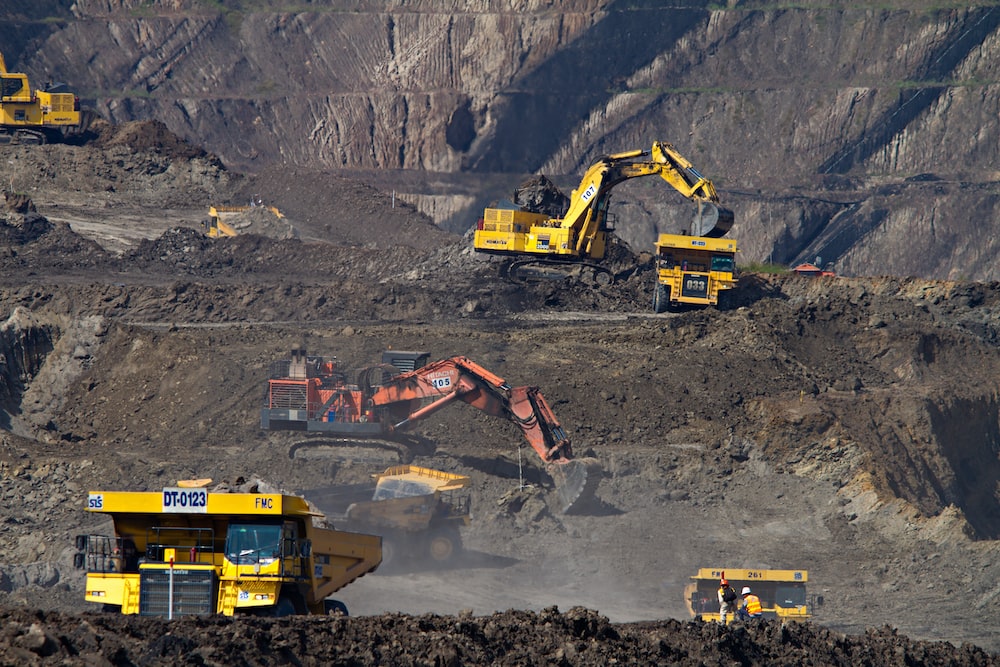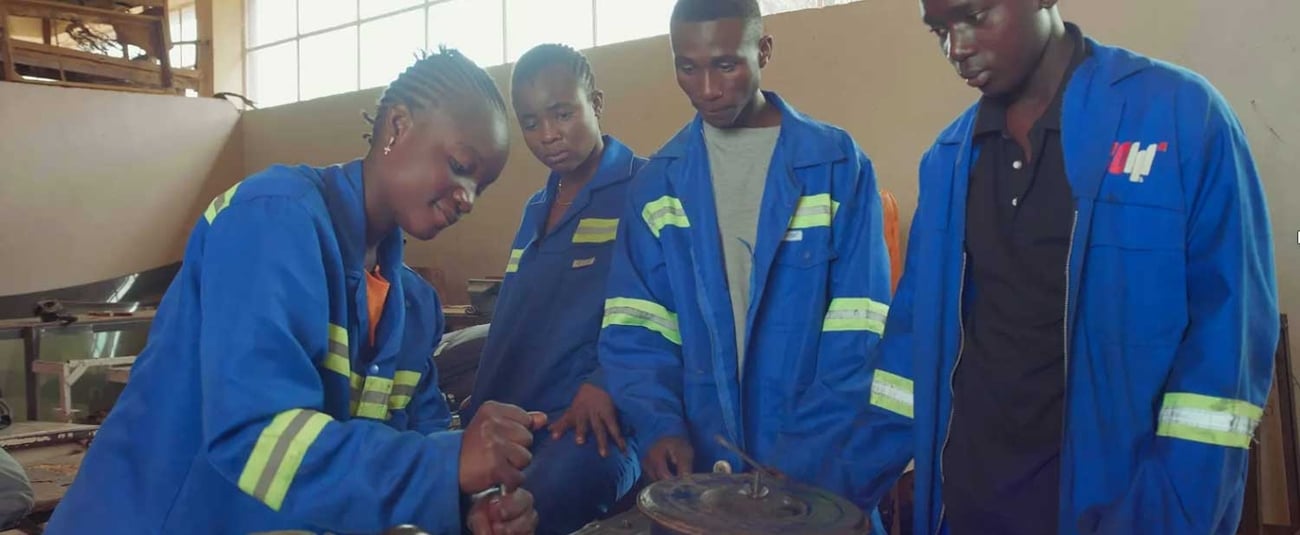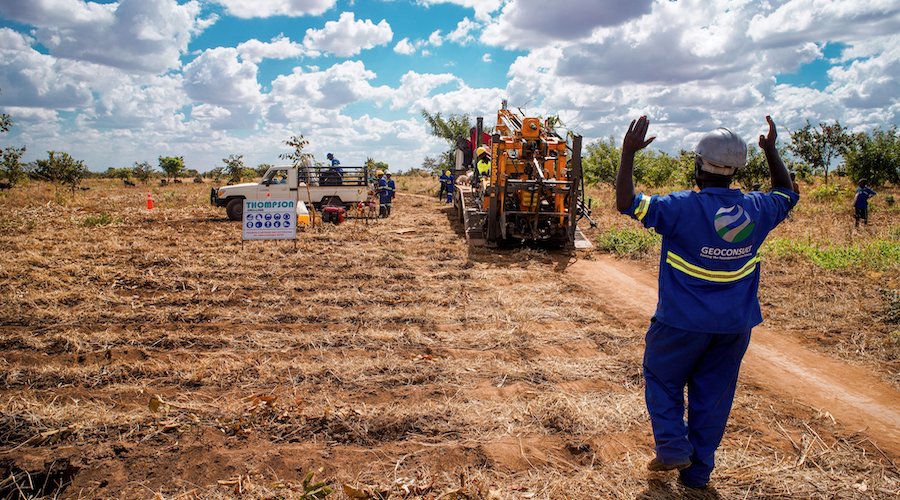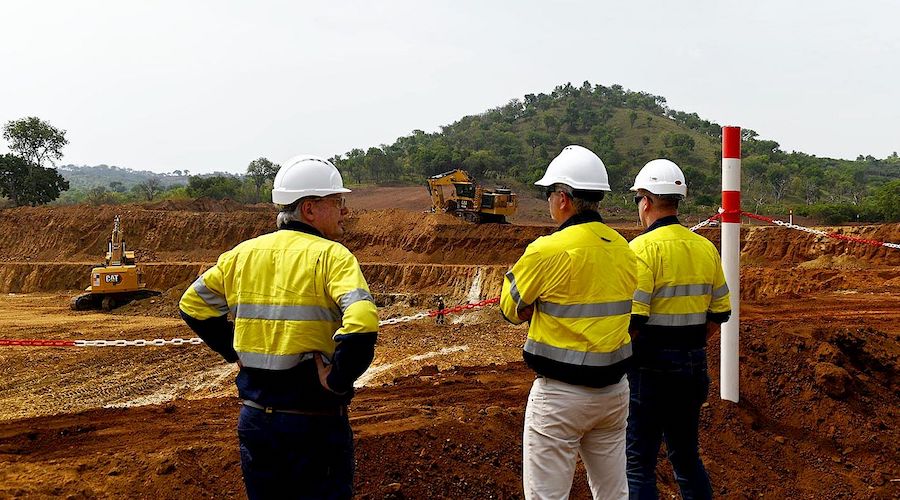Mining the heart of Africa: China and the Democratic Republic of Congo
The impasse finally ended in April. For over 10 months, Gécamines, the state-owned mining company of the Democratic Republic of the Congo (D.R.C.), was at loggerheads with Chinese mining company CMOC 洛阳钼业 — a cobalt mining juggernaut that owns 80% of one of the D.R.C.’s largest cobalt mines. Gécamines saidCMOC had “lied about its mineral reserves,” and owed it $7.6 billion in interest and royalties for mining this gray-blue metal, integral to producing batteries for electric vehicles (EVs). But no dice. So the D.R.C. put an estimated 16 karats (kt) (worth around $4.7 billion) of cobalt under an export ban — an astounding backlog that will now take at least a year to shift.
The D.R.C. supplies 73% of the world’s cobalt. But it goes almost exclusively to China, which has locked down both mining and refining of the metal in the country. China is now the D.R.C.’s biggest trade partner: Last year’s total trade volume was 10 times the second biggest (neighboring Zambia). All at a time when America has been pushing the D.R.C. to renegotiate Chinese mining deals, which the D.R.C.’s current president, Felix Tshisekedi, said were arranged “very badly.”
In late May, Tshisekedi made a state visit to China’s biggest cities to renegotiate and shore up ties. The two countries even put out a statement upgrading their partnership. For Christian-Géraud Neema, the Francophone editor of the China Global South Project, it’s a symbolic gesture, showing that “China sees the D.R.C. as an important and strategic partner in Africa.” In the D.R.C., China displays willingness to “solve problems” and chivvy Chinese businesses to build the infrastructure they had promised.
For the D.R.C., it’s all about keeping China onside: As the D.R.C.’s finance minister, Nicolas Kazadi, has insisted, renegotiation “is not about challenging Chinese investment, it is about challenging investment that is not fair.”
Democratic Republic of the Congo
Founded: August 15, 1960
Population: 102 million
Government: Constitutional democracy
Capital: Kinshasa
Largest City: Kinshasa
Established relations with the P.R.C.: February–September 1961; November 24, 1972
The world’s largest producer of cobalt
Originally, the D.R.C. and China had a shared hatred of imperialists. The D.R.C.’s first post-independence leader, Patrice Lumumba, turned to the U.S.S.R. and Mao’s China as allies, meaning Dwight D. Eisenhower backed a trusted ally of Patrice Lumumba, hoping he’d “get rid of this guy.” It tripped the country into a pattern of on-off civil war and corrupt dictatorships, which it still hasn’t quite recovered from.
Under America’s thumb, the D.R.C. severed diplomatic ties with the P.R.C. for the rest of the 1960s, with the latter arming rebels in the D.R.C. and stirring up class warfare. But relations healed in 1972, once the U.S.S.R. had become the main enemy for both countries.
Chinese money flooded into the D.R.C. in the 2000s under President Joseph Kabila, who — dazzled by China’s rise — hoped the Chinese could help the D.R.C. (and himself) strike it rich. His government negotiated joint ventures with Chinese companies, offering them the minerals in return for infrastructure.
But as Tshisekedi says, the ventures were badly handled. The most infamous is SICOMINES, hailed by Kabila as “the deal of the century.” In 2009, two Chinese companies pledged $3 billion in infrastructure projects in exchange for a 68% stake in the venture and ownership of all the cobalt and copper mined, tax free. But in 2022, the D.R.C. government reported very little of the infrastructure was ever built, while Bloombergexposed how Kabila had siphoned off $302 million of public money from the project. The mine has been exempt from tax all this time, denying the D.R.C. any revenues. So much for “win-win.”
Corruption and corporate greed were the root causes for these bad deals; Kabila’s administration was open to bribes from Chinese and Western companies in return for wildly unfair contracts. In all, the D.R.C. government estimates that Chinese companies gained over $10 billion in minerals over the past 10 years due to these contracts, for only $822 million in built infrastructure.
For all the fleecing, the D.R.C. needs China. “China’s ability to accommodate and adapt to the D.R.C.’s murky mining environment makes it an ideal partner for many decision makers in the D.R.C.,” says Neema. It’s also a good military ally for Tshisekedi, whose administration craves stability. The Congolese have bought state-of-the-art Chinese military gear, and been offered military training from the PLA to quash M23, a rebel group in North Kivu Province in the east.
Neema also notes the renegotiations come close on the D.R.C.’s elections in December 2022, and any successes would be boosting Tshisekedi’s campaign. But having left it so late, “he is not in a good position to exert pressure or buy time to get a better deal with the Chinese who can drag out this process,” Neema adds.
“We don’t want to have all our eggs in one bag,” D.R.C. Finance Minister Kazadi has said. Congolese ministers are also courting American investment to broaden development opportunities, signing an MOU with the U.S. government to help them develop supply chains to refine cobalt domestically (though there’s no certainty the American government is committed to this deal).
Meanwhile, Chinese Foreign Minister Qín Gāng 秦刚 has said that China wants greater security for its citizens in the region — the global surge in demand for EVs will keep the D.R.C. and their mines a priority for years to come (or however long it takes cobalt-free EV batteriesto arrive).
Can the D.R.C. truly get a fair deal with China this time? The SCMP reports Congolese officials saying they hoped a new SICOMINES deal could be signed by the end of 2023. But Neema says it’s too early to tell. The ball is now in the D.R.C.’s court, and it must press its advantage in light of the upgraded relationship. “If they do nothing, then nothing significant will come out of it.”
Share this content:
















